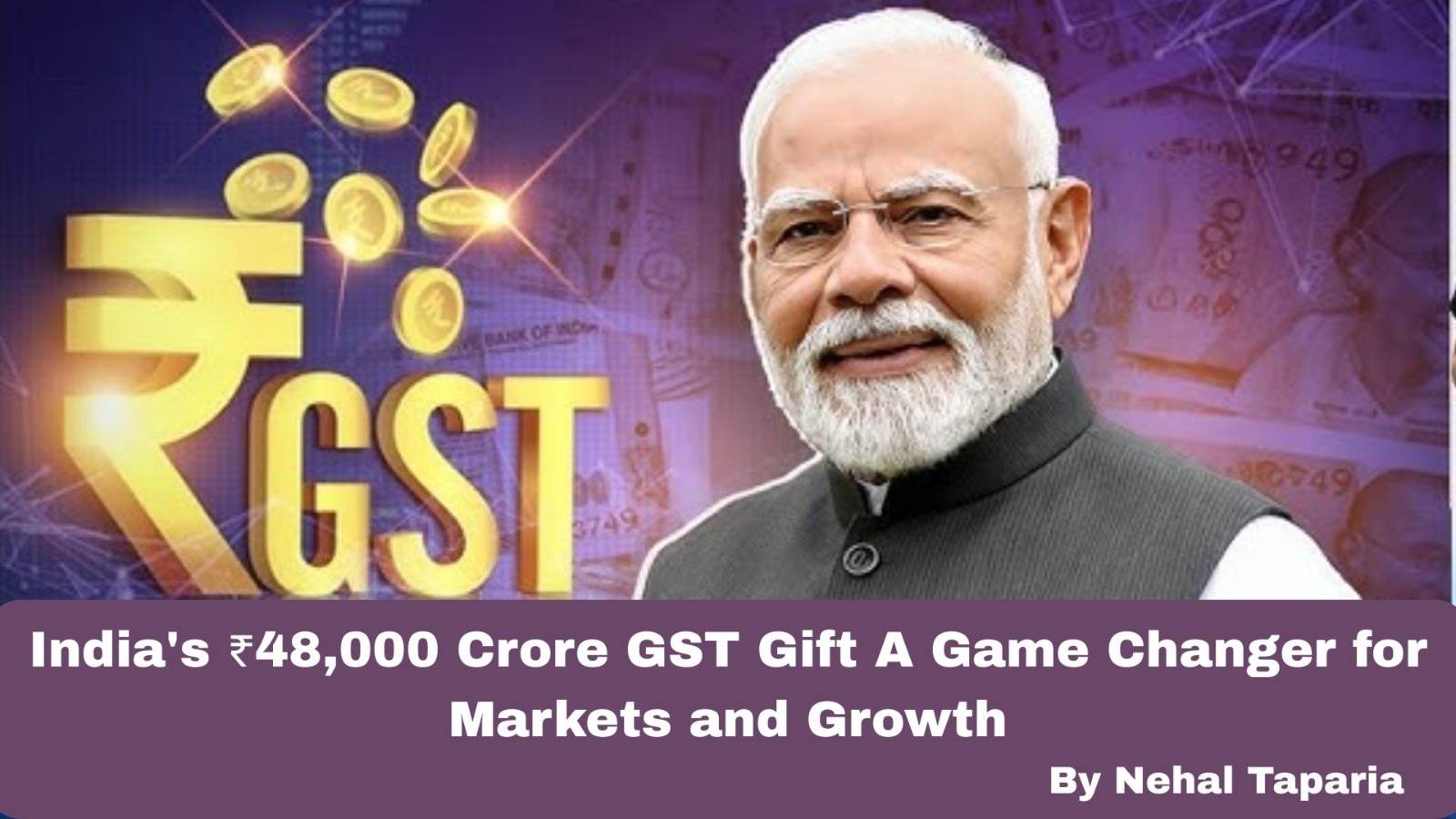India's ₹48,000 Crore GST Gift—A Game Changer for Markets and Growth

India's ₹48,000 Crore GST Gift—A Game Changer for Markets and Growth
Introduction
On September 4, 2025, India witnessed a landmark reform as the GST Council, under Finance Minister Nirmala Sitharaman, completed what Prime Minister Modi had promised on Independence Day: a sweeping overhaul of the GST regime with an estimated fiscal impact of ₹48,000 crore. The all-important GST slabs have been rationalized—from four to two tiers (5% and 18%), with a 40% “sin” category for luxury items—setting a festive tone for markets and households alike.
Market Reaction
The stock indices responded sharply:
- Sensex surged nearly 900 points, while Nifty climbed about 1%, nudging toward the 25,000 mark.
- Sectoral rallies were led by Automobiles (notably small cars, two-wheelers, even SUVs), FMCG, Real Estate, Cement, and Consumer Electronics.
- According to SEBI-linked analysts, a gap-up opening near 24,950–25,000 is anticipated, potentially testing resistance at 25,200–25,350.
Why This Reform Matters
- Consumption Boost
Lower tax rates on essentials and small-ticket items bolster purchasing power. Veteran investors like Dr. V.K. Vijayakumar say it’s a consumer-centric “bombshell,” primed to spur demand. - Ease of Doing Business & SME Relief
The rationalization simplifies compliance. SMEs, one of the growth pillars, stand to benefit significantly. - Multiplier Effect via Real Estate & Infrastructure
With GST cuts on cement, electronics, and small cars, real estate and associated industries like construction, cement, steel, paint, utilities get a boost—this is a classic multiplier play. - Macroeconomic Resilience
Experts like Nilesh Shah (Kotak AMC) describe the reform as “ek teer kai nishaan”—boosting growth, lowering inflation, aiding fiscal consolidation, and easing business conditions while potentially offsetting U.S. tariff shocks. - GDP Implications
Estimates suggest GDP might gain 20–50 basis points as increased demand spills over, with Jefferies and Morgan Stanley forecasting a whopping ₹2.4 lakh crore demand boost—and lifting GDP by 50–70 bps. - Fiscal Sustainability
Though the reform costs ₹48,000 crore, officials expect increased compliance and buoyant consumption to cushion revenue impact—calling it “fiscally manageable.”
Conclusion
This GST rationalization marks the boldest tax reform since GST's inception, aligning with India’s economic reset just ahead of the festive season. It’s delivering relief across sectors, boosting investor confidence, and setting the stage for an uplifting “Diwali rally” in equities. With implementation slated for September 22, the impact could persist, shaping consumption, earnings, and investor sentiment through year-end and beyond.
Final Thoughts
India’s ₹48,000 crore GST reform is not just a tax tweak—it’s a structural stimulus. Positioned as a “Diwali gift,” it could fuel a consumption-led, market-driven growth cycle. Investors and businesses should watch the rollout, monitor corporate earnings, and track how consumer sentiment translates into real demand.
By Nehal Taparia
This content is for educational and knowledge purposes only and should not be considered as investment or Trading advice. Please consult a certified financial advisor before making any investment or trading decisions.
Our Recent FAQS
Frequently Asked Question &
Answers Here
1. What exactly is the GST reform?
All items previously taxed at 12% and 28% have been adjusted: now only two tiers apply—5% and 18%. A higher 40% “sin” slab covers tobacco, luxury items, and select vehicles. This change eliminates prior rate complexity.
2. What is the fiscal cost?
3. When will the changes take effect?
4. Which sectors benefit the most?
5. How did the stock market respond?
6. What do experts say?
7. What about macro risks?
8. What’s next for investors?
Copyright © By Empirical F&M Academy. Design & Developed by Techno Duniya


.jpg)


.jpeg)




